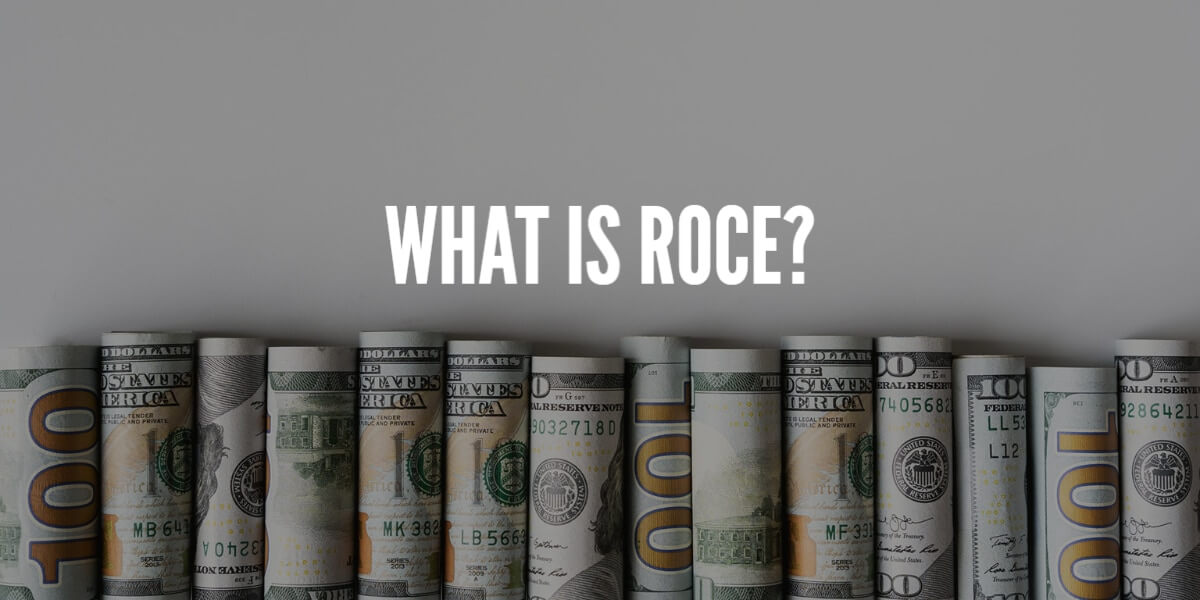
What is ROCE? Return on Capital Employed explained.
Return on capital employed or ROCE is a key financial performance indicator, i.e., profitability ratio. It is an indispensable part of a company’s financial statement. It is often used within companies to assess the performance of a subsidiary or a profit center, and It is also a key indicator for stock analysts. Put simply,it measures how good a business is at generating profits from its capital.
There are also other profitability measurements, such as net operating profit after tax NOPAT, ROIC, ROE, and ROI. In this article, we will see in detail what ROCE represents, how to calculate it, and what is a good ROCE percentage.
Key takeaways
- Return on Capital Employed measures the return generated by the company’s operating activities relative to the capital invested in the business.
- It’s a similar metric to return on invested capital.
- A higher ROCE indicates that the company generates more profit per unit of capital invested. It, therefore, generally represents a sign of good performance.
What is ROCE?
It’s the abbreviation for return on capital employed. It’s one of the most important profitability ratios.ROCE is also called the primary ratio. It takes into account liabilities and debts, total assets less current liabilities. It is used with the ROE to provide a clear picture of a company’s performance.
ROCE formula – How Is the Return on Capital Employed Calculated?

The calculation of the return on capital employed can be achieved through two methods. It can be calculated by dividing the earnings before interest and taxes or net operating profit by the capital employed. The second method involves dividing profit before interest and taxes by the difference between current liabilities.
To calculate the return on the capital employed, investors use the following formula:
ROCE= EBIT/Capital Employed
EBIT=Earnings before interest and tax
Capital Employed=Total assets − Current liabilities
You can also use the following formula:
ROCE = (Operating Profit / Capital Employed) x 100
Operating profit refers to the company’s earnings before interest and taxes (EBIT).
Capital Employed represents the total capital invested in the business, including equity and long-term debt.
Return on Invested Capital (ROIC) vs. Return on Capital Employed (ROCE)
To evaluate profitability efficiency from a capital perspective, two commonly used metrics are ROIC and ROCE. These measures are comparable as they assess profitability concerning the company’s total capital. Ideally, both ROIC and ROCE should surpass the weighted average cost of capital (WACC) to ensure long-term profitability.
The concept behind ROIC is similar to that of ROCE. However, the components for calculation are a bit different. The formula for calculating ROIC is:
Net Operating Profit After Tax ÷ Invested Capital
The calculation of invested capital in the ROIC formula is more intricate than the straightforward capital employed calculation in ROCE. Invested capital can fall into either of two categories:
Net Working Capital + Property Plant and Equipment + Goodwill and Intangibles
Or
Debt and Leases + Equity and Equity Equivalents + Non-Operating Investments and Cash
What measures of Return on Capital are Employed?

Return on Capital Employed measures the return generated by the company’s operating activities relative to the capital invested in the business. It helps assess the efficiency of capital allocation and the effectiveness of management in generating profits from the resources employed.
A higher ROCE indicates that the company is generating more profit per unit of capital invested, which is generally considered favorable. It suggests that the company is utilizing its resources efficiently and effectively. On the other hand, a lower ROCE may indicate less efficient management of capital or lower profitability relative to the investment.
Investors, analysts, and management commonly use return on Capital Employed to evaluate the performance and profitability of a company. It is particularly useful for comparing the performance of companies within the same industry. However, it’s important to consider other financial metrics and industry-specific factors when analyzing a company’s overall financial health and performance.
Return on capital employed is a financial indicator based on accounting criteria. Unlike the return on equity (ROE), the ROCE indicator is not subject to bias due to the leverage effect.
Why Use ROCE if You Already Have ROA and ROE
Measures?
Certain analysts favor using ROCE as a metric instead of return on assets and return on equity as it takes into account both equity and debt financing. These investors assert that the return on capital provides a more accurate assessment of a company’s profitability or performance over a longer duration.
ROCE and Evaluation of the Credibility of a Business Plan
ROCE can be used to evaluate the credibility of a business plan in a quick and very relevant way.
It is necessary to calculate the ROCE (before or after tax) over the forecast period and compare it with the historical period in order to detect any “aberration.”
In an “economic” approach, it is better to calculate the ROCE after current taxes.
The analysis of the historical and forecast evolution of the ROCE provides a synthetic overview of the consistency of the forecast data with the historical results.
The limits of return on capital employed

It’s a financial ratio that measures the profitability and efficiency of a company’s capital investments. It explains how effectively a company utilizes its capital to generate profits. However, ROCE has limits.
Net fixed assets influence ROCE and do not always show the economic value of the assets.
ROCE is calculated period by period. At the end of the investment cycle, ROCE increases because the value of net fixed assets decreases. The ROCE is influenced by the position in the investment cycle (the ROCE increases as one advance in the cycle)
The BFR that appears on the balance sheet on the closing date cannot be used to indicate the company’s permanent BFR.
What Is a Good ROCE Value?
Although there is no universally accepted benchmark, a greater return on capital employed implies a more effective enterprise in terms of capital utilization. Conversely, a lower figure could indicate a company with substantial cash reserves, as cash is incorporated in total assets. Therefore, elevated levels of cash can, at times, distort this measurement.
What Is a Good Percentage for Return on Capital Employed?

ROCE is generally considered better when the ratio is higher since it measures a company’s profitability. A ROCE of 20% or more usually indicates good financial standing. However, it’s important to avoid comparing the ROCE ratios of companies in different sectors. it’sIt’s best to use an apples-to-apples approach when considering any financial metric to make an accurate comparison.
Return on capital employed calculation example.
In order to comprehend the functioning of ROCE, let us consider a brief example of calculating the return on capital employed. Assume a group of investors is attempting to decide on which company to invest in. Company 1 generates a profit of £1,000 from sales worth £5,000, utilizing £4,000 of capital employed, resulting in a ROCE of 25%. On the other hand, Company 2 generates a profit of £1,200 from sales worth £5,000, employing £6,000 of capital, giving them a ROCE of 20%. Although Company 2 appears more profitable than Company 1 in terms of pure profitability, comparing the ROCE reveals that Company 1 is likely to be more profitable in the long run.
The Bottom Line
Various financial metrics exist that aid analysts and investors in assessing the financial state of various firms. One such metric is a company’s return on capital employed, which gauges its profitability and capital efficiency. Calculated using financial data from corporate statements, it’s important to compare ROCE ratios among companies in the same industry, as ratios can vary across sectors. Generally, a ratio of 20% or higher indicates a company’s success.




